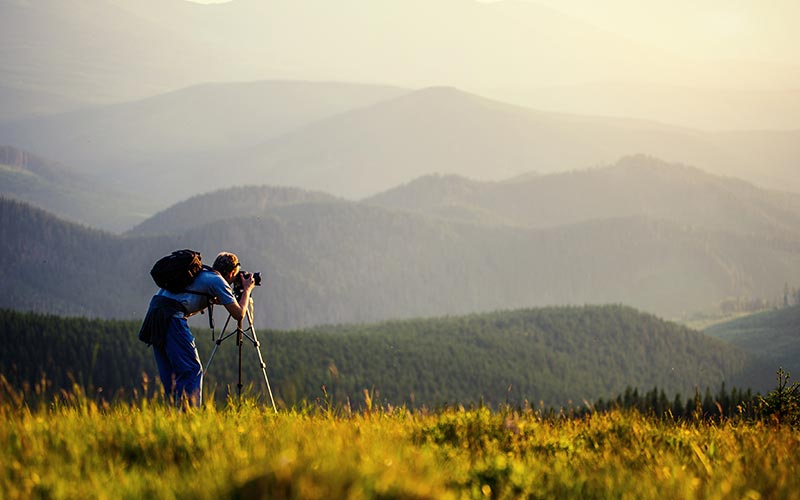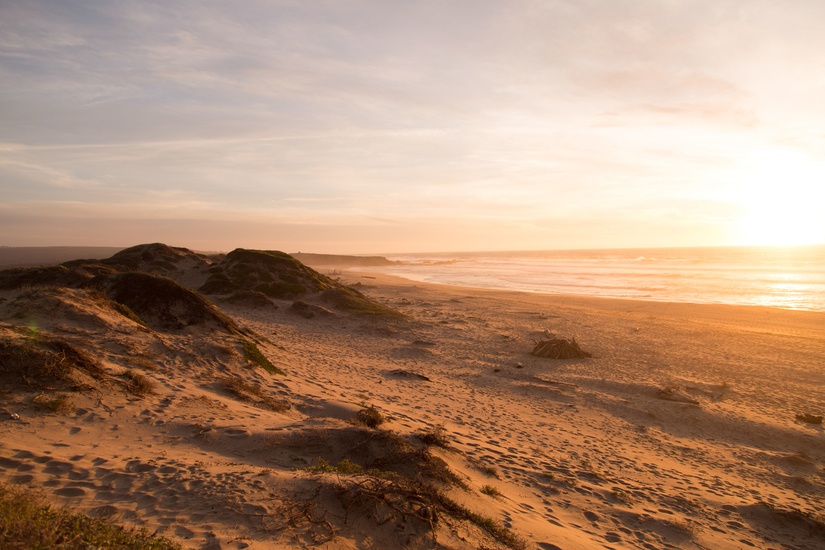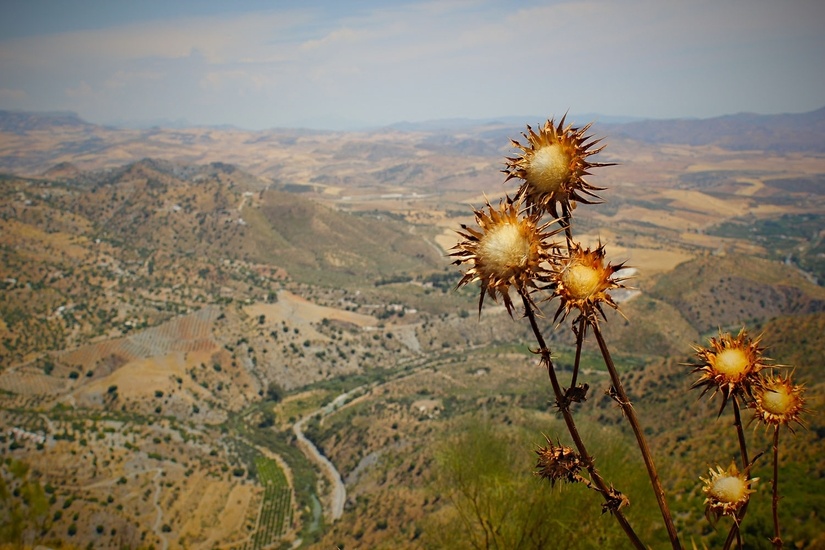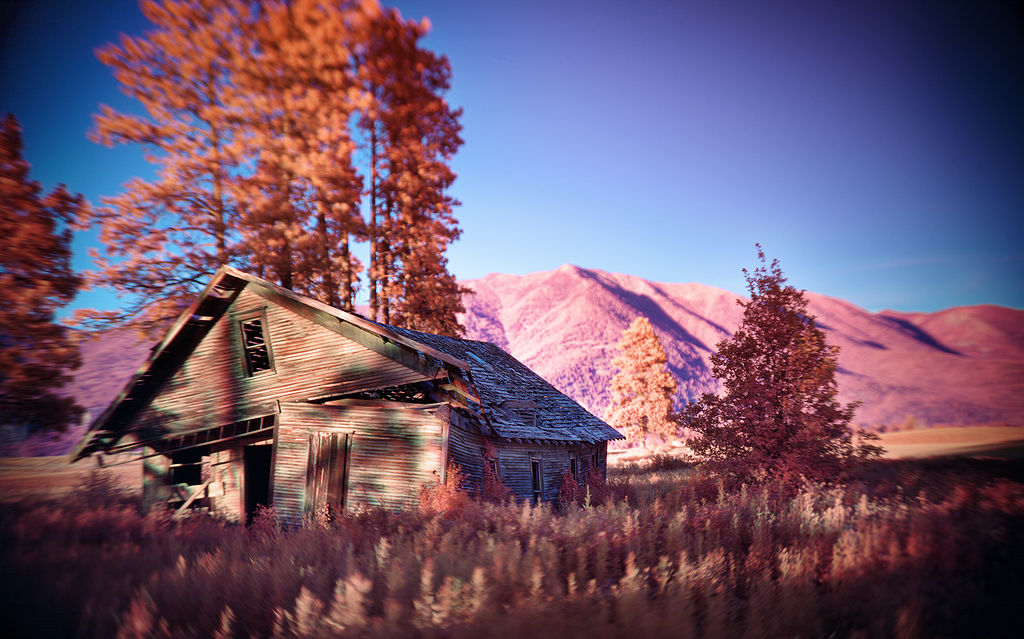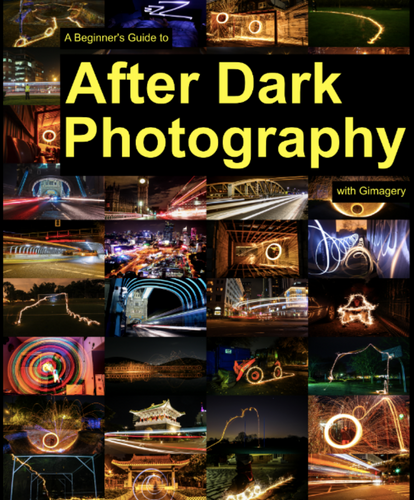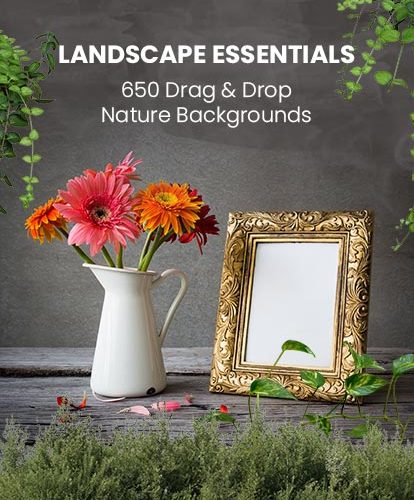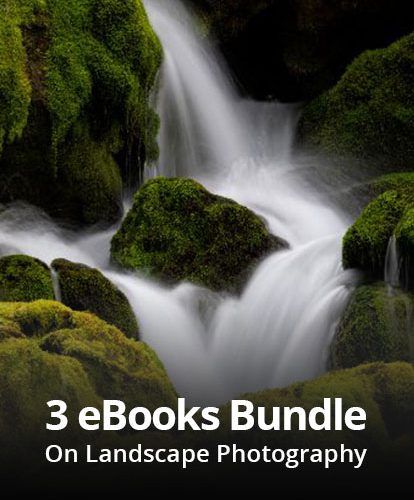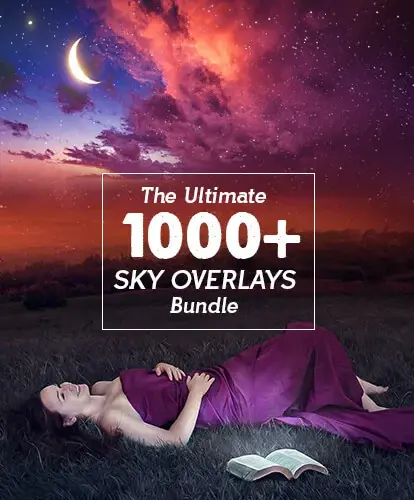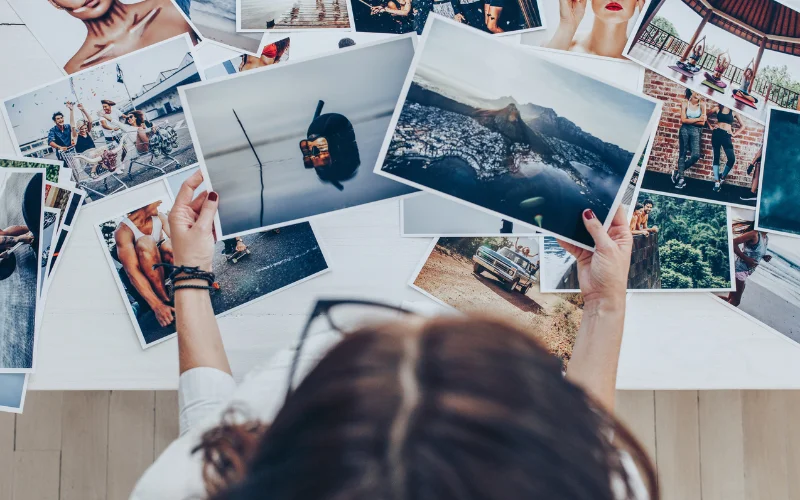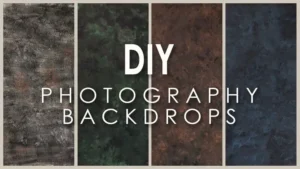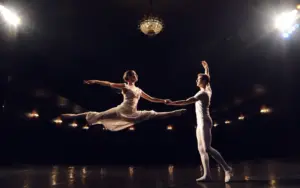Landscape Photography is a form of landscape art where the focus of the image is nature and natural landscapes. Usually, what tourists choose to be a scenic natural ‘background’ would be captured in its essence for a landscape photo. Learn more about it in this comprehensive landscape photography guide that will walk you through every crucial step.
Many people would snap pictures of a lush green garden on their phones, calling it landscape photography. But all professional landscape photographers understand the importance of tuning their skills and knowledge – sometimes for years – to master the art of clicking masterpieces.
And most of these photographers also agree with the need for such pictures to be taken from an environmentalist point of view.
Photographers should do more landscape photography, given how countless acres of such captivating scenery is frequently destroyed to create room for habitations and man-made structures.
Let us appreciate the great aesthetic appeal that nature so endlessly resonates with.
How To Click Ethereal Landscape Photographs?
Ansel Adams once said:
“There are no rules for good photographs; there are only good photographs.”
A stellar picture is like art that manifests when the photographer and the camera become on. However, some standard tips can differentiate between an accidental excellent click and art.
You can also take some unique landscape photography online training courses to bring out the best in you.
Carry The Required Equipment
If you’re a photographer, you have to get used to walking around carrying all your equipment. Shooting landscape pictures – especially ones that become eternal – is a combination of many things and equipment that top the list.
A superior quality camera and a tripod is a must. Get a quick-release one if you work a lot with ND filters. What you also need is an assortment of different lenses. Good lenses are like the eyes of the camera, and a lousy lens automatically translates into a bad picture—stock up on lenses with superior color reproduction, sharpness, and high contrast.
Like if you want to highlight a patch of flora within a landscape, you must have a telephoto lens handy. Or maybe you want your image to be a shot of how overwhelmingly massive God’s natural creation can be, which is indispensable for a wide-angle lens.
These should suffice but if you want to up your ante, invest in ND grads that help with darkening the sky if you are clicking with too much sunlight or if you want to get the focus strictly on the landscape. Of course, you can tint the sky post-processing, too, but why not just put it right on the camera?
Which Camera Settings Flatter Landscape Photography?
There’s no one setting that fits all. Camera settings are subjective to what type of image you want to clear and what your vision is for a particular click. However, you don’t have to worry any longer. This landscape photography guide will provide you suggestions on how to set your camera to achieve the desired effects.
For instance, if you want to shoot a sunrise or sunset, you need to work with the aperture settings without running the risk of softening your shots because of lens diffraction. Usually, f/16 and higher would work well and gives you sharper images.
Most novice landscape photographers religiously stick to a smaller aperture as their focus is to create a depth of field. However, while the depth is necessary, you don’t want to end up with softer photos, which is why the aperture range should be in the middle.
Most of your camera settings would also depend upon the day of your shooting and the equipment you have. The settings must be manipulated again, like the shutter speed for handhelds.
If you aren’t using a tripod and have the shutter speed set too low, you might end up with blurred images. But for a handheld, your aperture should be less than f/11 to get a good depth in your picture while keeping a decently fast shutter speed required for shooting handheld.
Increasing the ISO for a faster shutter speed won’t ideally work for landscape photography as the aim is maximum noise reduction and smoother tones. Photographers should keep the ISO to a minimum.
Then, depending on the time you choose to take your shot, you might have to use an ND grad to darken the sky. But paying attention to its positioning as a poorly placed grad will give it away and make the picture look more ‘photoshopped’ than art.
Lastly, what’s your landscape composition? Are you shooting a more significant chunk of the sky too? Your exposure settings need to be altered to suit the design. And if you’re shooting at a time when your landscape isn’t illuminated by sunlight, change the white balance to shade or cloudy.
What Is The Best Time To Shoot Landscape Photographs?
An important part of this landscape photography guide is to know the perfect timing to click a landscape photograph. Now, every photographer knows about the “Golden Hour” in photography, or the magic hour as some call it. That is a little before dawn, close to an hour after sunrise, and one and a half hours before sunset to close to an hour after sunset.
When the sun isn’t directly overhead, and the sunlight is falling from an angle creating exciting patterns and giving the scene – and hence your images – an interesting version.
There are also Golden Hour calculators on the internet that you can refer to get an accurate estimation, as these hours depend upon the season and place.
Lighting – especially for outdoor photography – is as important to photography as a camera is. Without good lighting, there would be no great images, just dull and flat clicks that look like a shadow of what you had envisioned.
“I never set out to photograph a landscape, nor do I think of my camera as a means of recording a mountain or an animal unless I absolutely need a ‘record shot.’ My first thought is always of light.”
-Galen Rowell
For landscape pictures too, targeting the golden hour is ideal but that shouldn’t stop you.
Landscape Photographers And Their Famous Quotes
You must have learned a few tips from this landscape photography guide to succeeding in your landscape photography. To further help you stay motivated, here are some quotations from well-known photographers.
“My own eyes are no more than scouts on a preliminary search, for the camera’s eye may entirely change my idea.”
– Edward Weston
“And most of my early pictures failed but about one in a 100 somehow looked better than what I saw.”
– Galen Rowell
“This then: to photograph a rock, have it look like a rock, but be more than a rock.”
– Edward Weston
“Landscape photography is the supreme test of the photographer – and often the supreme disappointment.”
– Ansel Adams
“A landscape image cuts across all political and national boundaries, it transcends the constraints of language and culture.”
– Charlie Waite
“The landscape is like being there with a powerful personality, and I’m searching for just the right angles to make that portrait come across as meaningfully as possible.”
– Galen Rowell
“To consult the rules of composition before making a picture is a little like consulting the law of gravitation before going for a walk.”
– Edward Weston
“Of course, there will always be those who look only at technique, who ask ‘how,’ while others of a more curious nature will ask ‘why.’ Personally, I have always preferred inspiration to information.”
– Man Ray
“Now to consult the rules of composition before making a picture is a little like consulting the law of gravitation before going for a walk.”
– Edward Weston
“There are always two people in every picture: the photographer and the viewer.”
– Ansel Adams
Landscape Photography Tips
-
Unending passion
It would help if you had a deep passion for making it as a landscape photographer. But, unless you are interested in this genre, it’s going to be frustrating for you. The long hikes, the unpredictable weather, and changing compositions will get on your nerves.
And it’s not necessary that even after getting everything right, you will end up with a good landscape click after a few tries. Sometimes you might have to sift through hundreds of images to find that perfect click-worthy of being called art.
-
Keep learning
Even if you are a pro, you need to keep learning about photography in general and your domain in particular.
With the ever-changing technology and advanced gears that can completely revamp the way you take and edit pictures, you need to be on top of your game to compete with the best out there.
Reinvent yourself, find different ways of photography and how it can affect your landscape images.
-
Plan ahead
Although you cannot determine every single thing ahead of time, there are some considerations you need to take into account even before you set out to click mesmerizing pictures.
One of them is the location. Agreed that sometimes you chance upon acres and acres of natural beauty at its finest, but most of the time, you aren’t going to be so lucky.
So plan on your location and what equipment you would be carrying along to click the picture the way you see it in your head. Go to the location a couple of times before you decide to look and scout for a good vantage point. Some of these might need some hunting, or it could be a challenging uphill climb, but when you want a picture that speaks a thousand words, you need to put in that effort.
Also, don’t forget the contingencies and personal items like warm clothing and food before you set off.
-
Feel the beauty, bask in it
A good landscape isn’t just meant to be clicked. When you reach your location with your gear in tow and all the preparation done, don’t just rush to start clicking.
Take a moment to see the beauty around you. Maybe it isn’t a vast expanse of lilies and dandelions, maybe it’s a barren, unforgiving land, but there’s beauty in it. You need to see and feel that beauty before attempting to capture it.
Remember, beautiful landscape pictures are like art, and the artist, the camera, and his feelings need to become one for that piece of art to be created.
-
Experiment
There’s no golden rule you abide by when taking pictures, landscape or otherwise, but still, a lot of pros try to play safe.
You need to have fun with your images, communicate a sense of emotion – melancholy, power, beauty – whatever it is that you want to communicate should shine through.
Most landscape photographers love the sunrise and the sunset time and a clear blue sky but there is beauty in thunder too, and rains can add a soft natural touch to your images.
Don’t be afraid of experimenting with landscape photography, especially shooting in different weather types. Just like the weather, the landscape changes too, like a cracked brownfield will become softer and ooze water when it rains, or the clean blue river imbibes the threatening aspect of a dark, thunderous cloudy sky and reflects that in its gray waters.
As a landscape photography expert, your aim should be to show the beauty of landscapes in every way.
-
Direct the viewer’s eyes
What do you want them to see? Is it the foliage in the foreground or the peaking snowcapped mountain at the back?
Structural elements help to direct attention to what you want them to see. Positioning elements on triangles and other geometric shape work well in creating a more balanced composition.
Or simply go by the rule of thirds by positioning key elements on the intersecting lines where the rest of the elements are kept outside of the intersecting lines.
-
Shooting an image is only half the work
You finally end up with a click that you like, congratulations, but that’s only one part of the work.
Post-processing is as important as clicking, if not more. Enhance nature’s true beauty by infusing a sense of your imagination through adding colors, removing flare, blending, clearing the haze, enhancing the image and adding a touch of magic.
Landscape photographs are not just appealing to the eye, but they are an important visual factor in creating a sense of environmentalism in people.
And as Galen Rowell so correctly states that “There is no question that landscape photography has played a major role in the environmental movement,” we urge all of you great landscape photographers to keep creating art, to keep weaving magic.
This landscape photography guide will teach you more about the various approaches to capture the best landscape photos and how to succeed in each. Browse through our collection of interviews with well-known photographers like Matt Kloskowski, Pep Ventosa, Alister Benn and Chris O’Donnell who share tips for capturing the best landscape photos.
In addition to the tips in this landscape photography guide, you can also add your own ideas to the list!
